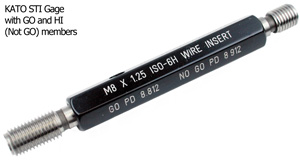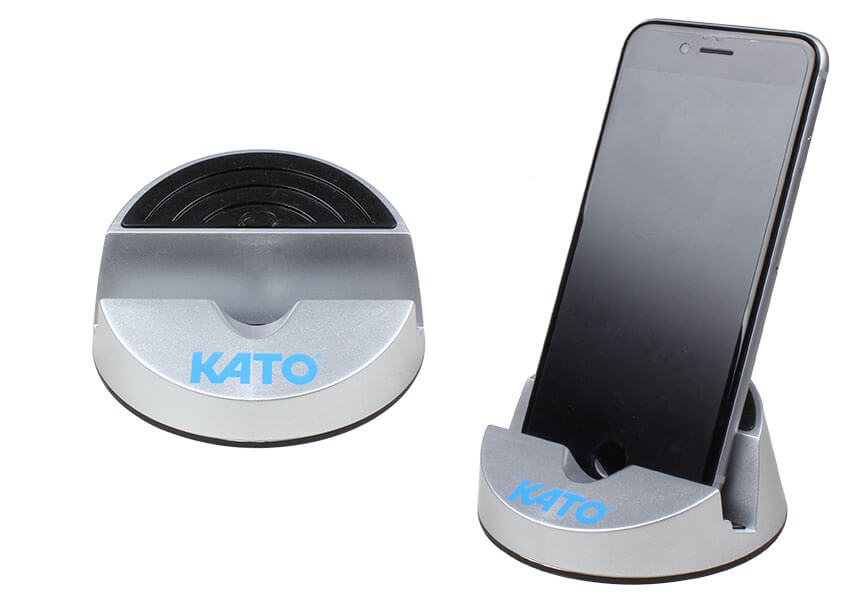Gaging Matters!
In previous technical articles, we wrote about hole preparation, e.g. drilling and tapping, for normal and limited material thicknesses, we even dedicated an issue to explain class of fit. In this article we'll concentrated on gaging the holes and this procedure.
One of our competitors likes to claim that using their inserts is as easy as 1, 2, and 3:
- For Drilling
- For Tapping
- For Installation
No, no, no… Did you guys forget about countersinking the holes? How about gaging the holes? Oh, and I guess breaking the tang off was a mere oversight as well?
Gaging the holes prior to installation of the inserts is critical to ensure the accuracy of the finished threads. To check the accuracy of an STI (Screw Thread Insert) tapped hole KATO offers two types of STI Thread Plug Gages:

KATO STI Gages comply with A-A-59158
Working Gages – Recommended for production use since their greater tolerance allows for more wear.
Reference Gages – Reference gages have pitch diameters at or very close to basic size and are to be used as master gages.
The class of fit specifies the pitch diameter of tolerance, with 3B (inch sizes) and 4H (metric sizes) being the tighter ranges and usually specified for military/aerospace applications. Class 2B (inch sizes) and 5H (metric sizes) provide a broader tolerance range, and are frequently specified for commercial/industrial and thread repair applications (learn more about Class of Fit in Article 0702, The Science Behind Pitch Diameter and Class of Fit). As a result, KATO STI Gages are offered in Class 3B or 2B (inch), and 4H or 5H (metric).
KATO gages include a “GO” and a “HI” (NOT GO) member. The Working Gage “GO” member has a 0.0002 wear allowance on the pitch diameter.
As mentioned previously the accuracy of the finished thread depends on the accuracy of the tapped hole. If the tapped hole is correct, the finished thread will also be accurate when the insert is installed.
It is not necessary to gage the installed insert. In fact, it’s impossible to gage an installed locking insert because of the locking coil. If gaging is attempted after the insert (non-locking) is installed, the Go thread plug gage may not enter freely; however, the insert will seat itself when the bolt or screw is installed and tightened. (Reference NASM33537 and MA1567)
One final note on gaging: As you all know (from reading the The Effects of Plating article) plating a tapped hole decreases the pitch diameter by four times the plating thickness. This means that just because a hole gaged prior to plating doesn’t mean it will gage after plating, so gage the threads (again) after you plate the holes! In addition, gaging the tapped hole will only check the major and pitch diameters of the thread, use a pin gage to check the minor diameter. Undersized holes account for the majority of installation problems, and significantly contribute to premature wear on the installation tools.
If you have any questions, please contact us.
For more technical articles, register to KATOpedia today! Registration is FREE, and take less than 1 minute to complete and gain access to the world's most comprehensive online encyclopedia for helically coiled screw thread inserts and tools.